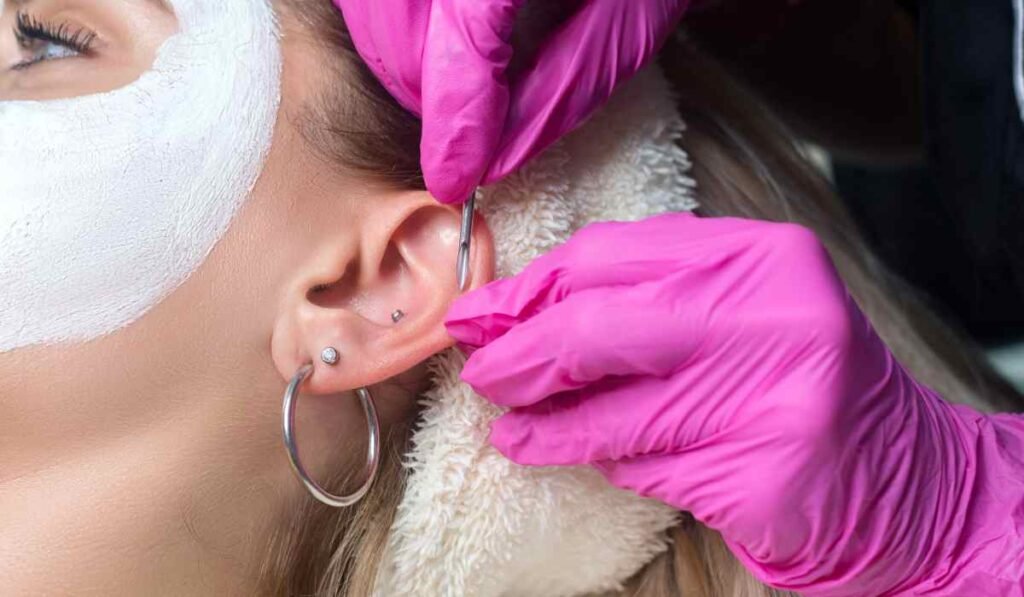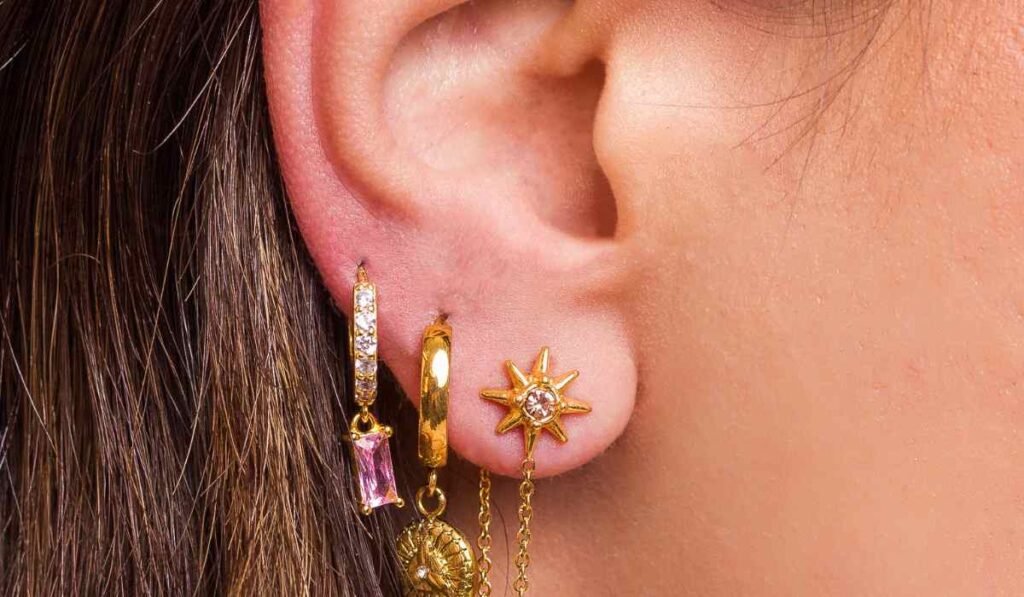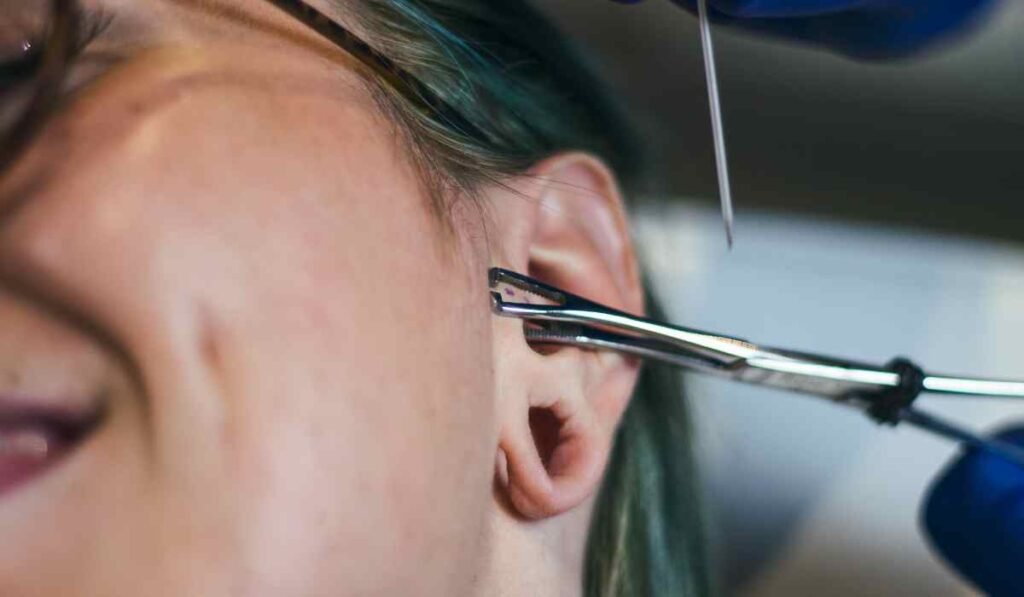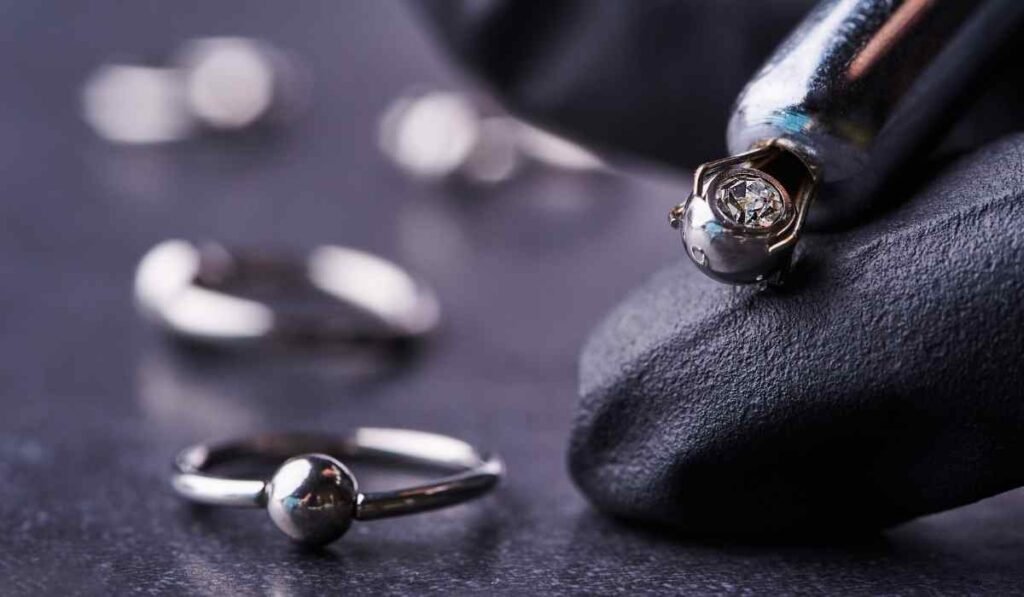When it comes to expressing your individuality and adding a touch of flair to your appearance, body piercings have been a popular choice for many. One of the latest trends that’s taking the piercing world by storm is “helix piercing.” This unique and stylish piercing has become a fashion statement for those looking to enhance their ear aesthetics.
Table of Contents
ToggleWhat is a helix piercing?
A helix piercing is a type of ear piercing that is done on the upper cartilage of the ear. It’s a fashionable and versatile way to express your individuality. This type of piercing has gained immense popularity over the years, making it a staple in the world of body art.

Types of Helix Piercings
Helix piercings offer a wide range of customization options. Here are some popular types of helix piercings:
Standard Single Helix Piercing
A standard single helix piercing is a popular ear piercing that involves piercing the upper cartilage of the ear. It’s a simple and elegant way to decorate your ear without going overboard. Typically, a small, delicate stud or hoop is used, and it can be placed anywhere along the outer rim of the ear’s upper cartilage. This piercing offers a subtle yet stylish look and can be customized with various jewelry options.
Shop Best Titanium Hypoallergenic Earrings
Double Helix Piercing
The double helix piercing is a trendy choice for those looking to make a bolder statement. This piercing involves two separate piercings along the upper cartilage of the ear, usually spaced apart to create a unique and eye-catching look. You can mix and match jewelry styles to achieve a personalized and asymmetrical appearance.
Triple Helix Piercing
For the ultimate in ear adornment, the triple helix piercing is a fantastic choice. As the name suggests, this style involves three piercings along the upper ear cartilage. These can be placed in a row or in a staggered pattern, allowing for a variety of jewelry combinations and a striking overall effect.
Forward Helix Piercing
The forward helix piercing is a distinctive and edgy option. It is situated on the outer rim of the ear, closer to the face, and is known for its unique placement. A small stud or hoop can be used for this piercing, creating an intriguing and contemporary look.
Mid Helix Piercing
The mid helix piercing offers a balanced and visually appealing option for ear piercing. Placed in the middle section of the upper cartilage, it can be adorned with various jewelry styles, from studs to rings, to complement your individual style.
Flat Helix Piercing
The flat helix piercing is a captivating choice for those who desire a unique and stylish appearance. It is located on the flat part of the upper ear cartilage and can be adorned with flat studs or barbells, giving it a minimalist yet chic appeal. This piercing style is a great way to add a touch of sophistication to your ear jewelry collection.

Helix Piercing Process
Getting a helix pierced is a straightforward process, but it should always be done by a professional piercer to ensure safety and precision. Here’s what you can expect during the procedure:
- Consultation: Your piercer will discuss your preferences and help you choose the type of helix piercing and jewelry that suits your style.
- Sterilization: The piercer will clean the area and use sterile tools to minimize the risk of infection.
- Piercing: A sterilized needle or hollow piercing needle will be used to create the hole, followed by the insertion of the chosen jewelry.
- Aftercare Instructions: Your piercer will provide you with aftercare instructions to ensure a smooth healing process.
Helix Piercing Aftercare
Proper aftercare is essential to prevent complications and ensure a smooth healing process for your helix piercing. Here are some tips to follow:
- Cleaning: Clean the piercing with a saline solution or a mild, non-alcoholic solution twice a day.
- Avoid Touching: Refrain from touching the piercing with dirty hands to prevent infection.
- Avoid Swimming: Stay away from pools, hot tubs, and other bodies of water until the piercing is fully healed.
- Changing Jewelry: Wait until the piercing has healed before changing the jewelry.
- Healing Time: Helix piercings typically take 2-4 months to heal completely.
- Pain and Swelling: Mild pain and swelling are common, but consult your piercer if you experience severe discomfort or signs of infection.
Helix Piercing Jewelry
The type of jewelry you choose for your helix piercing can significantly impact your overall look. Here are some popular options:
- Studs: Helix studs come in various shapes and styles, making them a versatile choice.
- Hoop Earrings: Hoops, such as captive bead rings and seamless hoops, can create a trendy and chic appearance.
- Barbells: Helix barbells are a sleek and modern option, often used for scaffold and double helix piercings.
- Cuffs: Ear cuffs can be worn without a piercing, offering a non-committal way to achieve the helix look.
Pain and Healing
Most people experience minimal pain during the helix piercing procedure, likening it to a quick, sharp pinch. The discomfort typically subsides shortly after the piercing. Healing time can vary from person to person, but with proper aftercare, it usually takes a few months.
Potential Risks and Complications:
Infection and Keloids
While helix piercings are generally safe, there is always a risk of infection. To minimize this risk, follow your aftercare instructions meticulously. If you notice signs of infection, consult your piercer or a medical professional promptly.
Keloids, which are raised overgrowths of scar tissue, can also occur. These are more common in individuals with a genetic predisposition. If you are concerned about keloids, consult with your piercer before getting a helix piercing.
Allergic Reactions
Some individuals may experience allergic reactions to certain materials used in helix jewelry, such as nickel. If you have a known sensitivity or allergy, discuss this with your piercer to ensure you choose jewelry made from hypoallergenic materials. Learn more about which metal earring is suitable for sensitive ears.

Helix Piercing: Pros and Cons
Pros:
- Unique Style: Helix piercings allow for endless customization, ensuring a unique and stylish look.
- Minimal Pain: The pain is usually mild and short-lived.
- Versatile Jewelry: A wide variety of jewelry options are available to suit your style.
Cons:
- Risk of Infection: Improper aftercare can lead to infections.
- Long Healing Time: Helix piercings can take several months to heal completely.
- Pain and Swelling: Some discomfort is to be expected during the healing process.
Tips for Styling Your Helix Piercing
1. Earrings Coordination
To create a harmonious look, match your helix jewelry with your other earrings. This can be done by choosing similar materials or complementary designs.
2. Hair Up, Hair Down
Helix piercings are versatile. They look great, whether you have your hair up in a bun or down. Experiment with different hairstyles to highlight your piercing.
3. Mix and Match
Don’t be afraid to mix and match different jewelry pieces in your helix piercing. Combining studs and cuffs, for example, can create an eye-catching effect.
Here are some common questions about helix piercing:
How long does helix piercing take to heal?
Helix piercing healing time typically ranges from 2 to 4 months, but it can vary depending on individual factors. Following proper aftercare instructions is essential for a faster and smoother healing process.
Can I change my helix jewelry during the healing process?
It’s advisable to leave the initial jewelry in place until your piercing is fully healed to avoid complications. Changing jewelry too early can disrupt the healing process and increase the risk of infection.
Are there any age restrictions for helix piercing?
Age restrictions for helix piercing may vary by location, but it’s generally recommended for individuals over the age of 16. Minors should have parental consent and accompany them to the piercing studio.

Can I sleep on my newly pierced helix?
It’s best to avoid sleeping on your freshly pierced helix to prevent irritation and pressure on the piercing site. You can use a travel pillow to keep your ear protected while sleeping.
What are the signs of an infected helix piercing?
Signs of an infected helix piercing may include redness, swelling, discharge, persistent pain, and a fever. If you suspect an infection, contact your piercer or a healthcare professional for guidance.
Conclusion
Helix piercings have gained popularity for their unique and customizable appearance. Whether you’re drawn to the outer helix, forward helix, or any other variation, these piercings allow you to express your individuality with style.
Remember to choose a professional piercer, follow proper aftercare, and select the right jewelry to make the most of your helix piercing experience. While there may be a few inconveniences along the way, the end result is a fashionable and distinctive addition to your overall look.

.jpg)
.jpg)
.jpg)